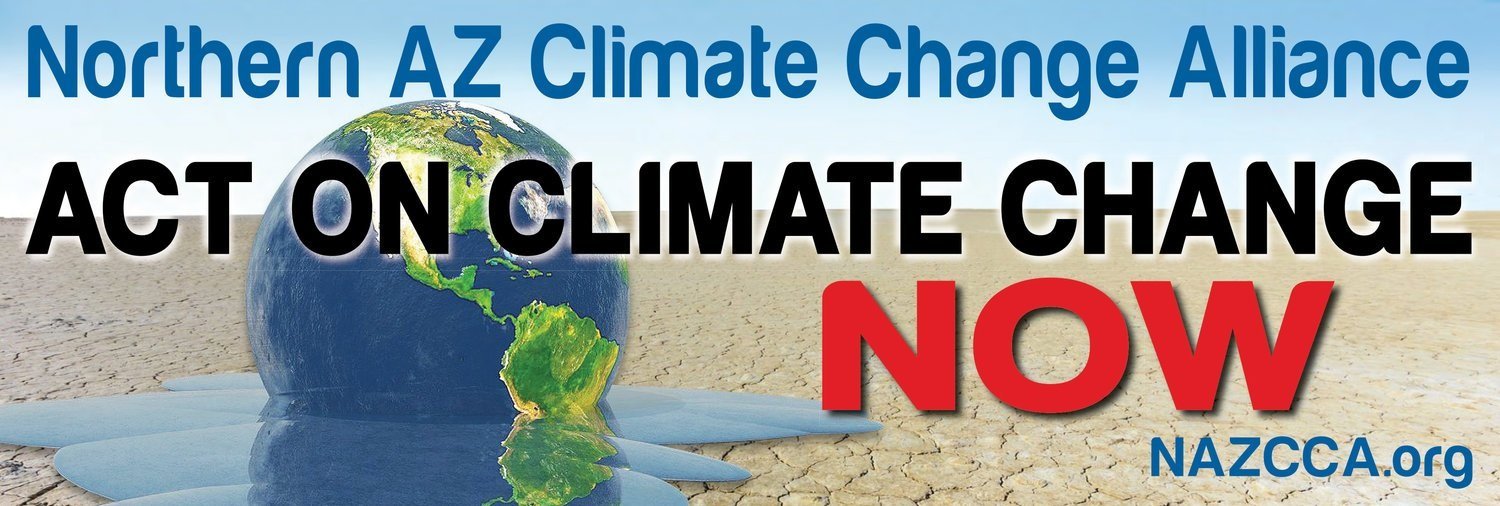Spotlight on Climate
Global Climate Disasters – This is Not the New Normal
STEFAN SOMMER
2021 was yet again one of the hottest years on record. This past summer was the hottest summer on record for North America. Is this the New Normal? In Flagstaff many people are now installing home cooling for the first time. In Phoenix the city has installed a network of Cooling Refuges and Hydration Stations to try and reduce the number of people ending up in the emergency room from extreme heat exposure. Those who can afford to are buying second homes in Flagstaff to escape extreme summer heat. Is this the New Normal? Lake Powell and Lake Mead are emptying out and close to hitting rock bottom. Snowfall in the Rockies and on our mountain is becoming more erratic and keeps dwindling. Is this the New Normal?
Scientists have been warning us since the 1800s that this was coming. Now our headlines are filled with one climate disaster after another. This past year, unprecedented downpours caused flooding not only in Flagstaff, but in the Pacific Northwest, Hawaii, Europe, Australia, South America, China, and many other parts of the world. Now that we have added over 2.6 trillion tons of CO2 to our atmosphere, we are seeing the results in dramatic fashion. Added greenhouse gases have now heated the surface of the Earth and our entire atmosphere by 1.1°C (=2°F). This added heat energy is driving weather to more extremes. Since hotter air holds more water, these extreme downpours are no surprise.
Heat energy in the atmosphere is also what drives winds. So, it is not surprising that we are seeing more hurricanes and tornadoes, and it shouldn’t be surprising that these storms are getting stronger. The destructive path of over 30 tornadoes in the Midwest last weekend left close to 100 people dead and many more homeless or without power. The tornado that flattened communities along a 370-kilometer (230-mile) stretch in Arkansas, Missouri, Tennessee, and Kentucky is now being referred to locally as the Mayfield Tornado. Are tornadoes so big now that we will start naming them like we name hurricanes?
In Arizona we know about wildfires. It’s not just California, Oregon, Washington, Utah, New Mexico, and Nevada that have seen more wildfires burning more acres. In July, Arizona had already seen 480,000 acres burned; more acres than were burned up to that date in Alaska, California, New Mexico, and Oklahoma combined. As of August, over 1,100 Arizona wildfires had burned over 550,000 acres. Hotter conditions dry out our forests, and it should not be surprising that fire risk has skyrocketed. Is this the New Normal?
Strong winds and drought have also made the profitability of growing corn in Iowa more volatile. While we think of Iowa as the king of corn country, this may soon change, as corn production in northern Alberta, Canada continues to rise steadily year after year. Places like La Crete, Alberta have already seen a 1.8°C (=3.6°F) rise in temperature, extending their growing season by 3 weeks longer.
Shifts in agricultural productivity are being driven by climate change all over the world. In Honduras, Guatemala, and El Salvador, climate change has shifted the seasonality of rainfall and made drought more frequent and intense. Farmers who grow corn and beans have seen their yields plummet. When they can no longer feed their families, they flee to the cities. When they can’t find work there, they flee northward towards Arizona. In 2020, 30 million people fled their homes due to climate disasters all over the world. The numbers this year are expected to be even higher. Is this the New Normal?
Unfortunately, these things are NOT the New Normal. Even though this year was the warmest year on record, it is likely to be the coolest year for the rest of our lives. Greenhouse gases will continue to trap heat, and the effects of a warmer atmosphere will get stronger and stronger. In a recent study, the World Bank projects that by 2050 we will see 143 million climate refugees every year due to the effects of climate change. It projects that 17 million people will flee their homes in Latin America every year. Can we make things better in 2022? ONLY if we take immediate actions to reduce our carbon emissions.
Dr. Stefan Sommer, Stefan.Sommer@nau.edu
NAU Center for Adaptable Western Landscapes, https://www.cawl.nau.edu/
and the
Northern Arizona Climate Change Alliance, www.NAZCCA.org/volunteer

